Key takeaways:
- Color theory plays a crucial role in design, influencing emotions and perceptions, and helping to create accessories that resonate with wearers.
- The color wheel is essential for understanding relationships between colors and creating harmonious combinations.
- Color can strongly impact personal identity and confidence, with certain hues evoking specific moods for different occasions.
- Effective accessory design balances functionality with aesthetics, using techniques like color blocking and storytelling to create meaningful pieces.
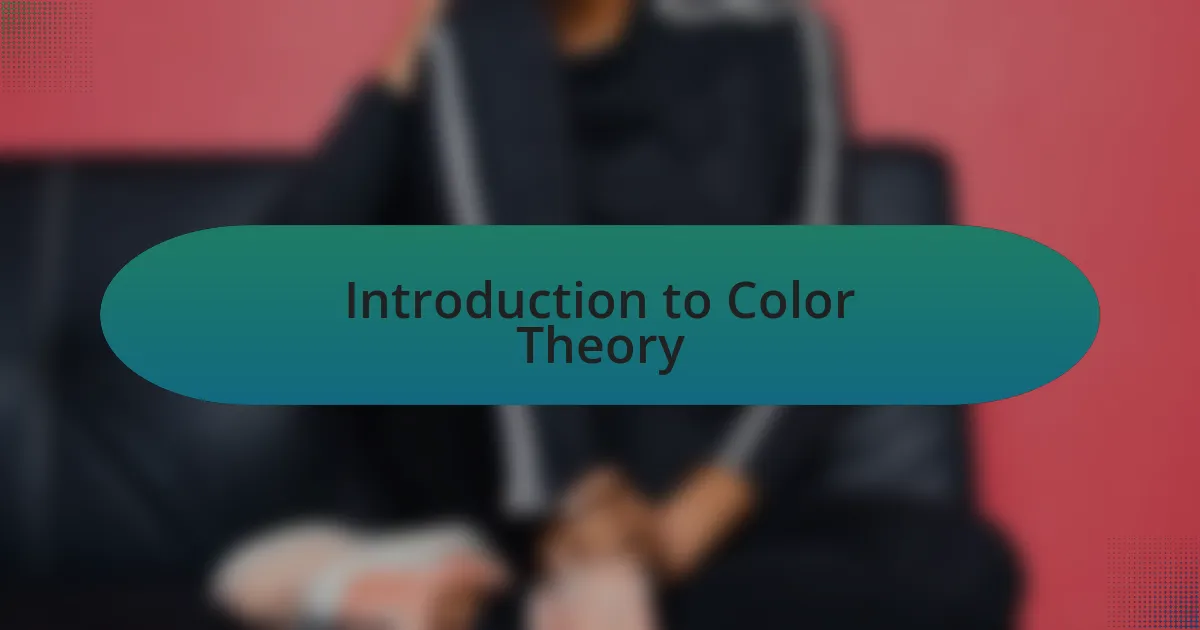
Introduction to Color Theory
Color theory is the foundation of design, influencing how we perceive and feel about an accessory. I remember the first time I experimented with a bold color palette; it felt like unlocking a secret language that transcended words. Have you ever noticed how certain colors can lift your mood or evoke nostalgia? That’s the magic of color.
At its core, color theory explores the relationships between colors and their impact on our emotions and perceptions. I’ve often found that complementary colors, like blue and orange, create a striking contrast that draws attention. It’s fascinating to think about how two colors can work together harmoniously, isn’t it?
Understanding the color wheel was a revelation for me; it helped me see colors not just individually but in context. The more I delved into shades and tones, the more I realized how essential they are in creating the right vibe for any accessory. Have you ever chosen an accessory only to find that it doesn’t quite match the mood you wanted to convey? That’s where color theory comes into play, helping us design pieces that resonate emotionally with the wearer.
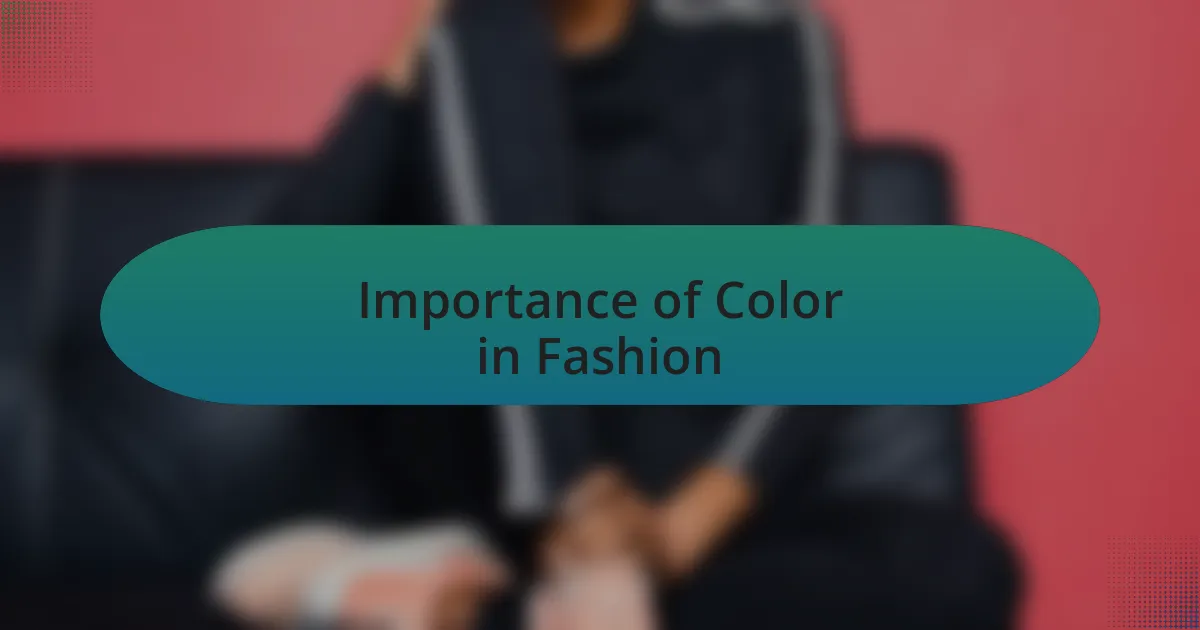
Importance of Color in Fashion
Color isn’t just an aesthetic choice in fashion; it profoundly shapes our experiences and identity. I’ve noticed that when I wear a vibrant red accessory, it commands attention and exudes confidence. Have you ever felt a sudden boost in your self-esteem simply because of the color you chose to wear? It’s incredible how something as simple as color can alter the narrative of our day.
Moreover, the psychology behind color isn’t something to overlook. For instance, during my early days in accessory design, I found myself gravitating towards soft pastels, which made my creations feel delicate and approachable. When I paired these colors with bold designs, the result was astonishing—a beautiful tension between elegance and strength. Why do you think some colors resonate with different moods? It’s a question that continues to inspire my exploration of color.
Ultimately, color can forge connections that words sometimes can’t. I recall showcasing a collection where each piece reflected a specific emotion through its color scheme. The feedback was remarkable; people felt not just attracted to the designs but also emotionally connected to their meanings. Isn’t it fascinating how a simple hue can tell a story?
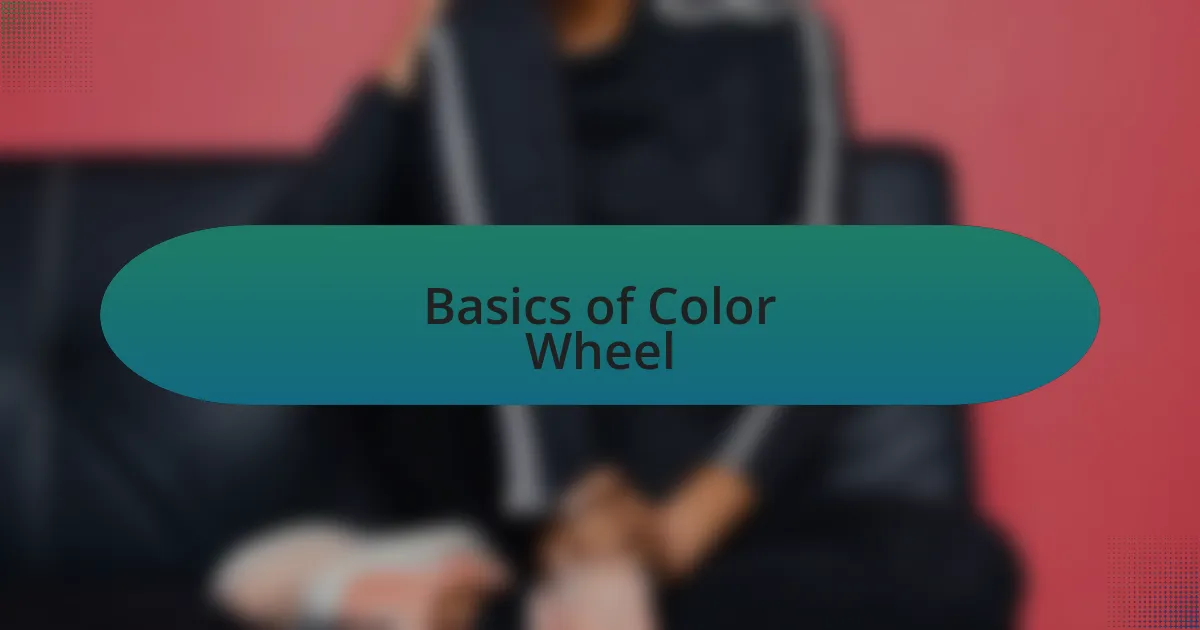
Basics of Color Wheel
The color wheel is an essential tool that visualizes the relationship between colors. I remember when I first discovered it; it was like unlocking a hidden code in design. The wheel is divided into primary, secondary, and tertiary colors, offering a roadmap to create harmonious color combinations. Have you ever felt unsure about which colors to pair? The color wheel can guide you in making those choices effortlessly.
Primary colors—red, blue, and yellow—serve as the foundation for all other colors. I often find that starting with these colors can spark inspiration for my accessory designs. When I constructed a piece using a bold primary palette, it created a playful vibe that instantly caught attention. Isn’t it amazing how foundational elements can lead to vibrant expressions?
On the other hand, secondary colors arise from mixing primary colors, and tertiary colors come from blending primary and secondary hues. I’ve experimented with various blends in my designs, resulting in unique palettes that often surprise me. For instance, layering a secondary green with a sugary pink can evoke a refreshing yet sweet aura. Don’t you think exploring these combinations can take your designs to unexpected places?
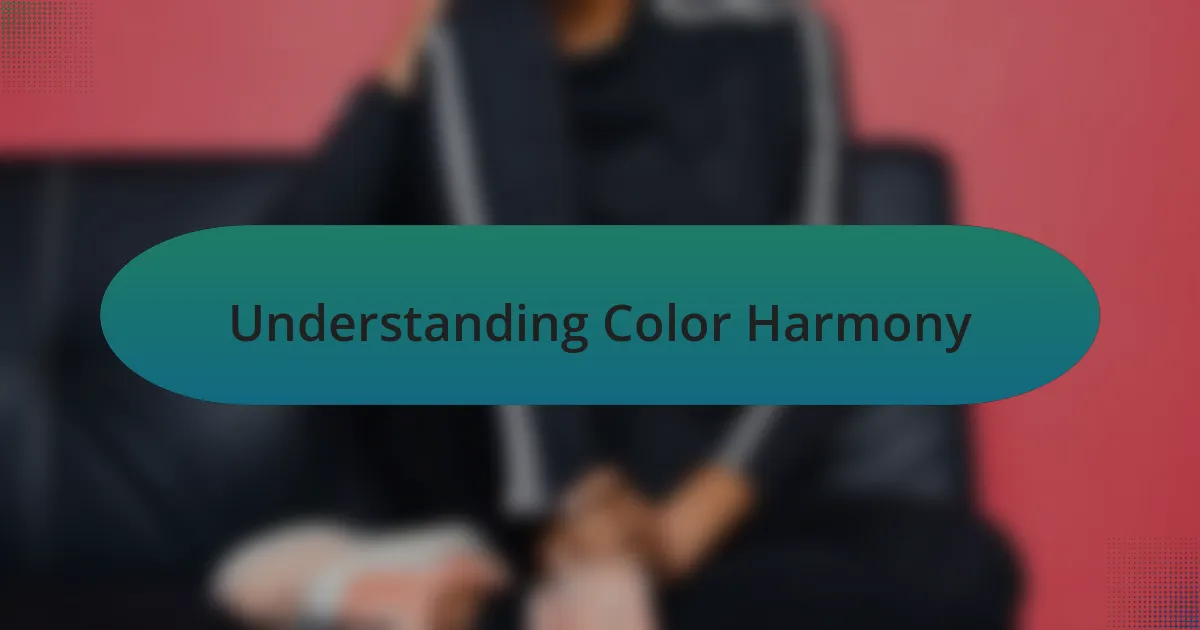
Understanding Color Harmony
Understanding color harmony is truly where the magic happens in design. In my experience, color harmony refers to the pleasing arrangement of colors that evoke a certain mood or emotion. I often find myself pondering how different hues interact with one another. For example, when I pair complementary colors—think of blue and orange—I create a striking contrast that captures the eye. Have you ever noticed how certain combinations can invoke excitement or calmness?
One technique I rely on is the use of analogous colors—those that sit next to each other on the color wheel. I remember designing a collection where I combined greens and blues inspired by a serene ocean landscape. That gentle harmony brought a peaceful vibe to the accessories, making them feel welcoming and refreshing. Isn’t it fascinating how a simple color shift can transform the entire feel of a piece?
Additionally, I’ve learned the importance of using monochromatic schemes, where variations of a single color create depth and interest. For instance, I crafted a series of earrings using various shades of deep red, playing with light and dark tones to add dimension. This approach can evoke sophistication and unity, don’t you think? Understanding these principles of color harmony not only elevates my designs but also tells a richer story through the accessories I create.
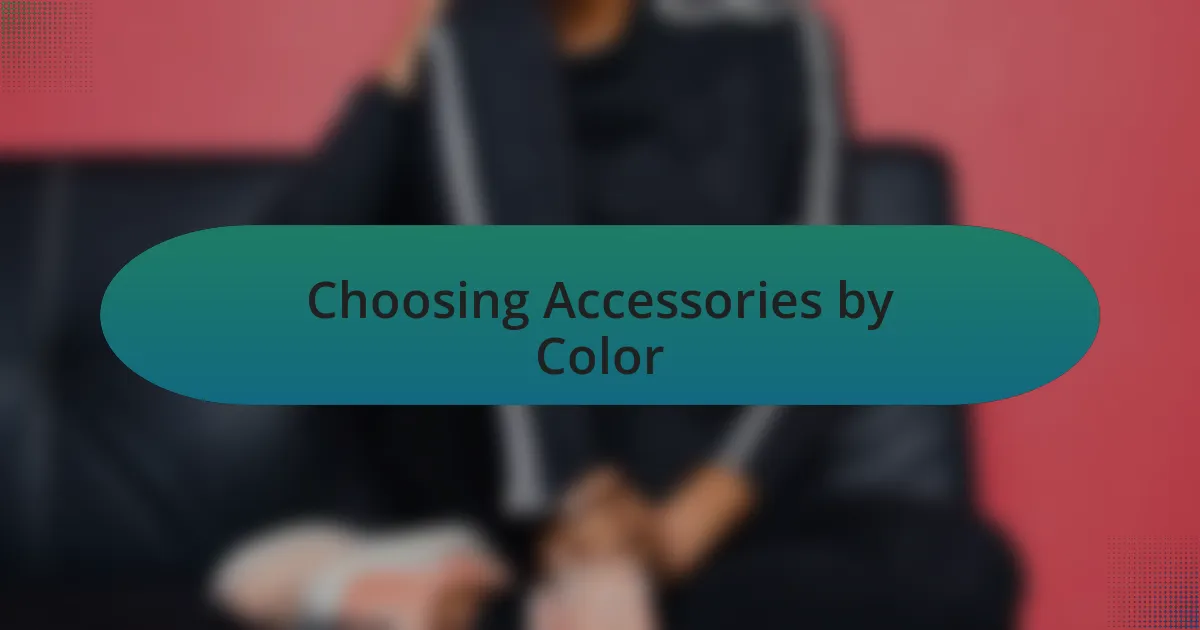
Choosing Accessories by Color
When it comes to choosing accessories by color, I always start by considering the outfit I’m working with. I vividly recall a time when I paired a vibrant yellow bag with a simple gray dress; the bag not only added a pop of color but transformed the entire look. Have you ever experienced how just one bold accessory can elevate your style and make a statement?
Selecting the right color can also depend on the occasion or mood I want to convey. For instance, when I’m feeling adventurous, I might reach for a bright teal scarf that radiates energy and creativity. Conversely, during more formal events, I often opt for deep jewel tones like emerald or burgundy, which exude elegance and refinement. It’s intriguing how colors can communicate different vibes, don’t you think?
I often encourage friends to experiment with color combinations that might seem unconventional. One memorable moment was when a friend hesitantly chose coral accessories for her navy dress. The unexpected blend turned out to be stunning, reinforcing my belief that sometimes the best choices are those that take a leap of faith. Color is not just a selection; it’s a personal journey that adds depth to our style narratives.
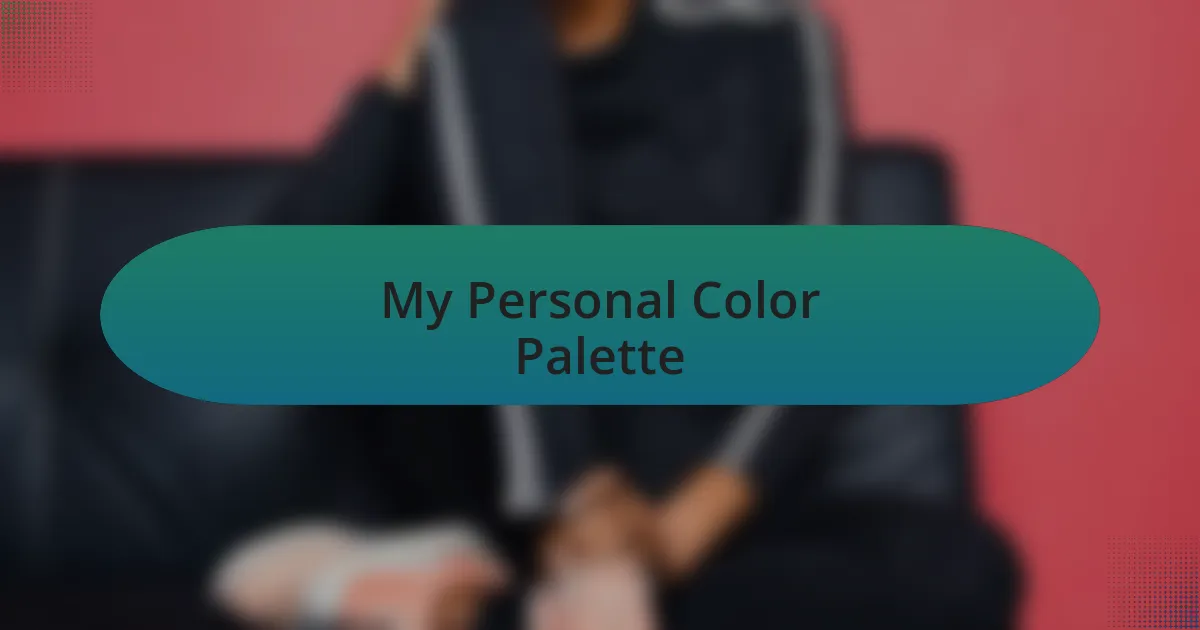
My Personal Color Palette
When I think about my personal color palette, I find that it reflects both my personality and the moods I wish to express. For example, I have a strong affinity for earthy tones, particularly warm terracotta and olive green, which resonate with me on a deeper level. They remind me of the calmness of nature and make me feel grounded, especially on hectic days.
Another favorite color of mine is a soft blush pink. I remember wearing a delicate blush scarf on a day when I was feeling particularly vulnerable. It not only softened my look but also gave me a sense of comfort and confidence as I navigated a challenging meeting. Do you have a color that resonates with you during tough times?
Interestingly, I’ve found that incorporating unexpected colors into my palette has been a game-changer. Recently, I experimented with a deep navy blue, which I previously thought was too serious for my style. To my surprise, it added a sophisticated edge to my collection and opened the door for new accessory pairings. Isn’t it fascinating how our perceptions of color can evolve over time?
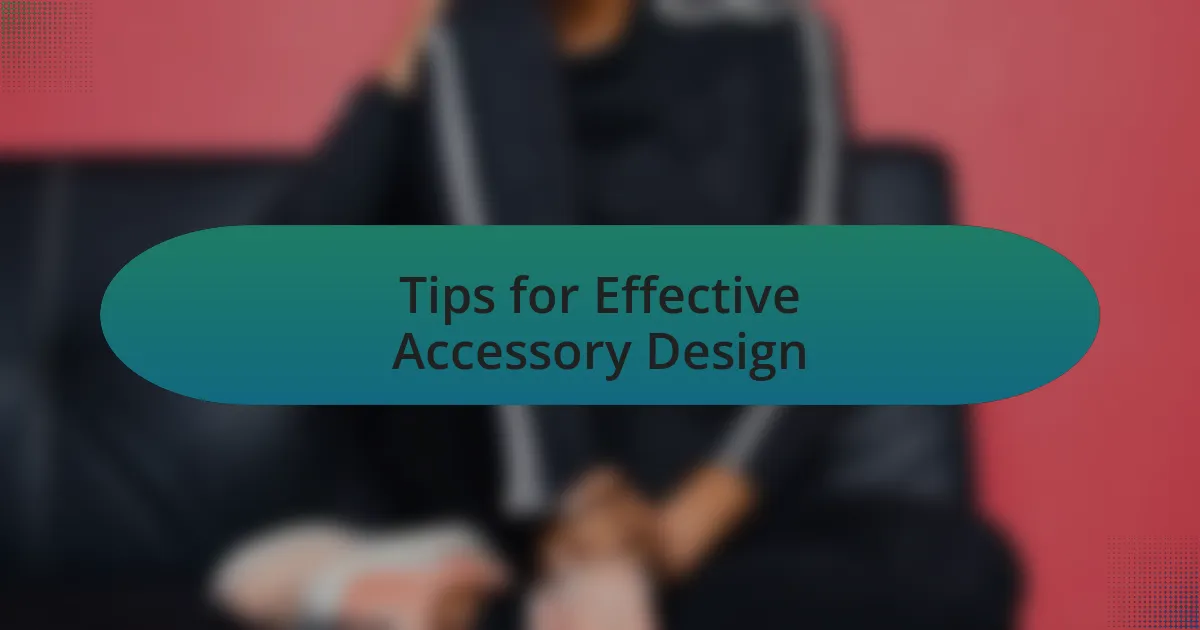
Tips for Effective Accessory Design
When designing accessories, I always prioritize functionality alongside aesthetics. For instance, I recall crafting a statement necklace that not only stood out due to its vibrant colors but also featured adjustable lengths for versatility. Have you ever considered how a piece can be both a fashion statement and practical for everyday wear?
Color blocking is another technique I’ve found to be tremendously effective in accessory design. I vividly remember a time when I mixed bold hues like mustard yellow and cobalt blue; the result was a lively collection that truly caught the eye. How often do you experiment with contrasting shades to bring energy into your designs?
Finally, I believe that storytelling through color is crucial. When I created a bracelet inspired by the sunset, blending deep oranges with soft purples, it resonated with my memories of evening drives along the coast. What stories do your accessories tell? Embracing the narrative behind each piece can create a deeper connection for both the designer and the wearer.